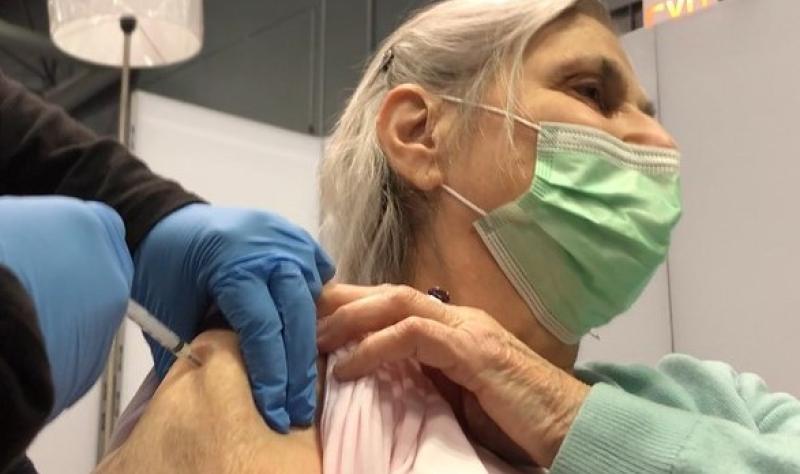Wrong. This article is misleading, as is your interpretation.
It describes an experiment done at Wuhan that is not really gain of function as would generally be interpreted: the virus was not modified to change its effectiveness. The target mouse to be infected was modified (and hence why it may fall into a grey area of "gain of function"). But this does not make the virus any more or less dangerous.
So, if we were to put it as "is this the sort of experiment we all got in a panic about a few months back where they were making more infectious viruses", the answer is emphatically no. Consequently, more to the point, this experiment does not meet the NIH's criteria for high concern. On either count, Fauci's claim that the NIH did not fund gain of function at Wuhan remains valid.
But this really doesn't sound good (from the yahoo link)
"In the
letter to Representative James Comer (R., Ky.), Lawrence A. Tabak of the NIH cites a “limited experiment” that was conducted to test if “spike proteins from naturally occurring bat coronaviruses circulating in China were capable of binding to the human ACE2 receptor in a mouse model.” The laboratory mice infected with the modified bat virus “became sicker” than those infected with the unmodified bat virus."
Why would they do that?
Then articles like this -
A grant proposal submitted by EcoHealth Alliance suggests the NIH was funding gain-of-function research in Wuhan.

www.nationalreview.com
- are claiming they were attempting to make bat coronaviruses more transmissible
" The proposal directs $599,000 of the total grant to the Wuhan Institute of Virology for research designed to make the viruses more dangerous and/or infectious — and its author acknowledged the danger associated with such work. "
(can't see where the evidence of that is as there's no citation) - is there any legitimate non-malevolent scientific reason they would do that?
Here's the text of the proposal, as all other sources are conjecture. Can't see the line which proposes making them more transmissible, but it is in technical-speak.

reporter.nih.gov
...
Aim 1. Characterize the diversity and distribution of high spillover-risk SARSr-CoVs in bats in southern China. We will use phylogeographic and viral discovery curve analyses to target additional bat sample collection and molecular CoV screening to fill in gaps in our previous sampling and fully characterize natural SARSr-CoV diversity in southern China. We will sequence receptor binding domains (spike proteins) to identify viruses with the highest potential for spillover which we will include in our experimental investigations (Aim 3).
Aim 2. Community, and clinic-based syndromic, surveillance to capture SARSr-CoV spillover, routes of exposure and potential public health consequences. We will conduct biological-behavioral surveillance in high-risk populations, with known bat contact, in community and clinical settings to 1) identify risk factors for serological and PCR evidence of bat SARSr-CoVs; & 2) assess possible health effects of SARSr-CoVs infection in people. We will analyze bat-CoV serology against human-wildlife contact and exposure data to quantify risk factors and health impacts of SARSr-CoV spillover.
Aim 3. In vitro and in vivo characterization of SARSr-CoV spillover risk, coupled with spatial and phylogenetic analyses to identify the regions and viruses of public health concern. We will use S protein sequence data, infectious clone technology, in vitro and in vivo infection experiments and analysis of receptor binding to test the hypothesis that % divergence thresholds in S protein sequences predict spillover potential. We will combine these data with bat host distribution, viral diversity and phylogeny, human survey of risk behaviors and illness, and serology to identify SARSr-CoV spillover risk hotspots across southern China. Together these data and analyses will be critical for the future development of public health interventions and enhanced surveillance to prevent the re-emergence of SARS or the emergence of a novel SARSr-CoV.
....
This project seeks to understand what factors allow coronaviruses, including close relatives to SARS, to evolve and jump into the human population by studying viral diversity in their animal reservoirs (bats), surveying people that live in high-risk communities in China for evidence of bat-coronavirus infection, and conducting laboratory experiments to analyze and predict which newly-discovered viruses pose the greatest threat to human health.

 nypost.com
nypost.com





